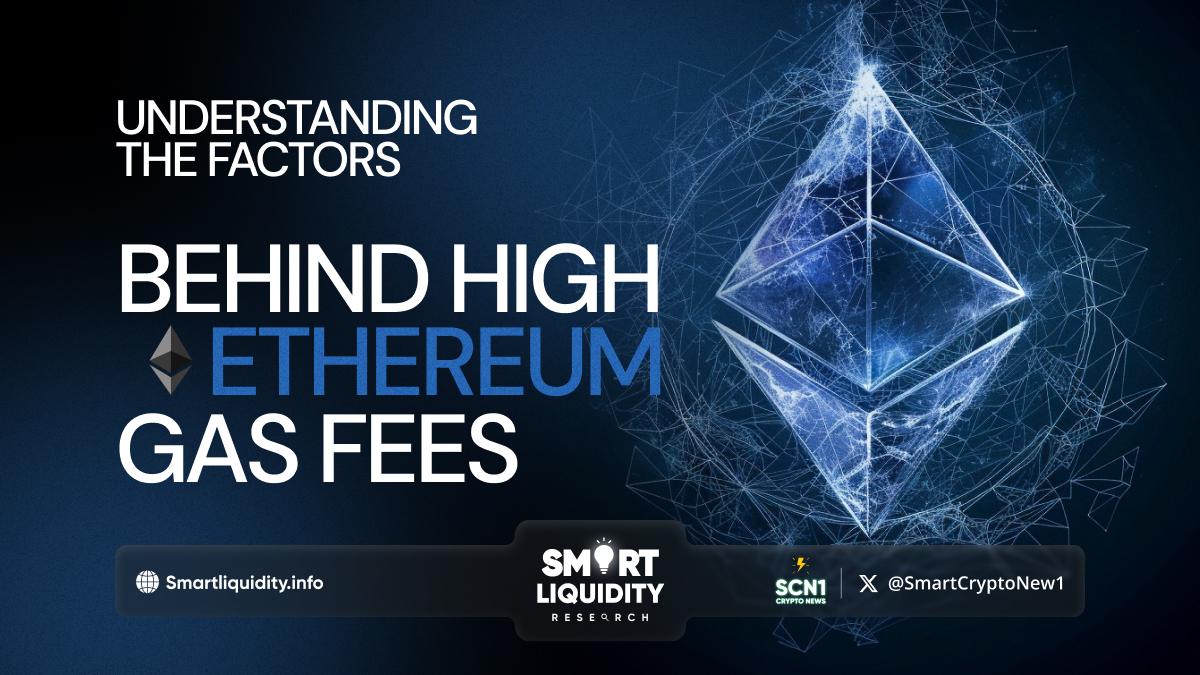Understanding the Factors Behind High Ethereum Gas Fees


Understanding the Factors Behind High Ethereum Gas Fees
In recent times, Ethereum gas fees have been a topic of much discussion within the cryptocurrency community. Gas fees, the costs associated with executing transactions or smart contracts on the Ethereum network, have often been criticized for their high and sometimes unpredictable nature.
Understanding why Ethereum gas fees are high requires a deeper dive into several underlying factors shaping the network’s dynamics.
Network Congestion
Ethereum, being one of the leading blockchain platforms for decentralized applications (dApps) and smart contracts, experiences significant network congestion during periods of high demand. As more users interact with dApps or execute transactions on the network, the limited block space becomes congested, leading to a bidding war for transaction inclusion. Users compete by offering higher gas fees to prioritize their transactions, resulting in an overall increase in gas fees across the network.
DeFi Boom
The explosive growth of decentralized finance (DeFi) applications on Ethereum has been a major driver of increased gas fees. DeFi protocols facilitate various financial activities such as lending, borrowing, and trading, all of which require on-chain transactions. As the popularity of DeFi continues to soar, so does the demand for Ethereum’s limited computational resources, putting upward pressure on gas fees.
Token Transfers
Ethereum’s blockchain serves as a platform for the creation and transfer of various tokens, including ERC-20 tokens. Each token transfer incurs gas fees, and with the proliferation of tokens and rising trading volumes, the demand for gas has surged. Token transfers, especially during periods of heightened market activity, contribute significantly to the congestion on the Ethereum network and subsequently drive-up gas fees.
Scalability Challenges
Ethereum’s current scalability limitations, particularly its reliance on a Proof of Work (PoW) consensus mechanism, pose challenges in handling a high volume of transactions. While Ethereum 2.0 aims to address these scalability issues through the transition to Proof of Stake (PoS) and other scalability solutions, such as sharding, the network’s current limitations contribute to high gas fees.
Ethereum Improvement Proposals (EIPs)
Changes to the Ethereum protocol, proposed through Ethereum Improvement Proposals (EIPs), can also impact gas fees. While some EIPs aim to optimize gas usage and reduce fees, others may inadvertently increase gas costs or introduce inefficiencies, affecting the overall cost of transactions on the network.
Ethereum gas fees are affected by factors like network congestion, DeFi growth, scalability issues, and protocol changes. The Ethereum community needs to work together to enhance network efficiency, scalability, and affordability. Solving gas fee challenges is vital for Ethereum to reach its full potential as a decentralized innovation platform.
What is Ethereum?
Ethereum is a decentralized, open source blockchain platform that enables developers to build and deploy smart contracts and decentralized applications (dApps). It was proposed by Vitalik Buterin in late 2013 and development was crowdfunded in 2014, with the network going live on July 30, 2015.
Ethereum uses its native cryptocurrency called Ether (ETH) to power the network. ETH serves as both a means of value transfer and a “fuel” for executing smart contracts and transactions on the Ethereum blockchain. Users pay gas fees in Ether to compensate miners for the computational resources required to process and validate transactions and smart contracts.




